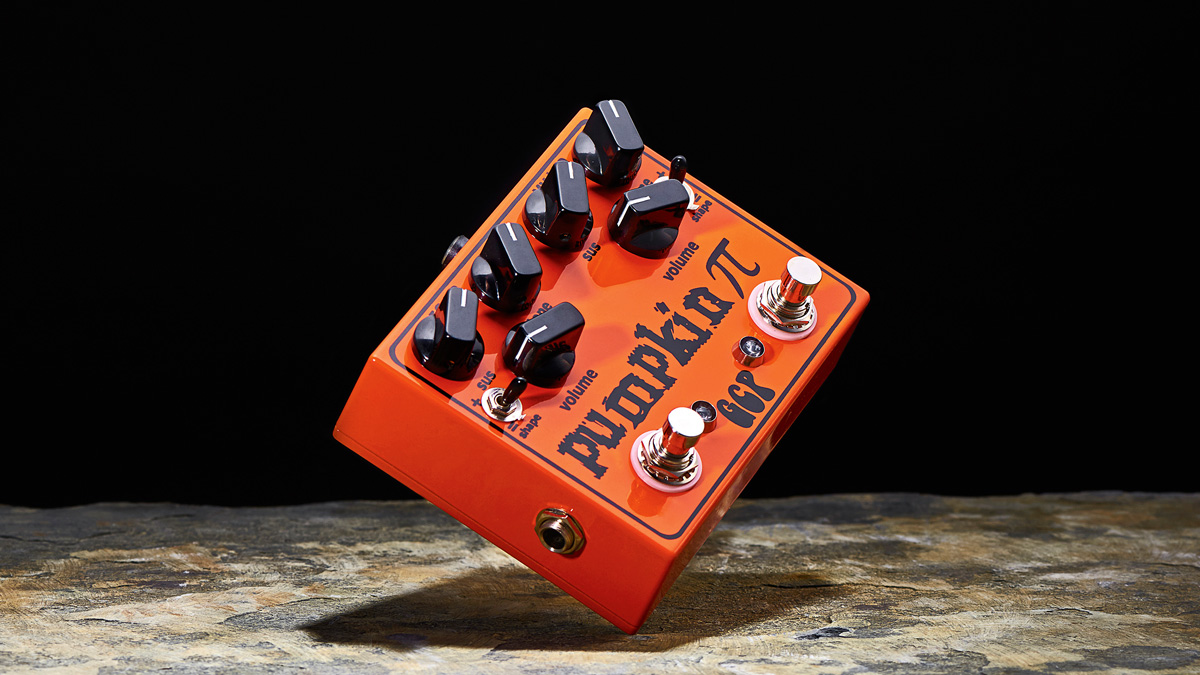MusicRadar Verdict
A great idea that’s smartly implemented in a home-grown pedal that doesn’t cost the earth. So why take just one Big Muff-style pedal on stage when you can have two?
Pros
- +
Two different-sounding Muffs in one pedal.
- +
Cascading option.
- +
Extra switched tonal variations cons.
Cons
- -
No battery power.
MusicRadar's got your back
The Electro-Harmonix Big Muff Pi is possibly the most popular distortion/fuzz pedal of all time with a list of famous players across a range of styles.
It is also one of the most cloned, although with the different historical Muff circuit variations reflected in these clones, choosing which to buy could cause brainache.
Green Carrot Pedals may have the solution, though: its Pumpkin Pi features two different Big Muff circuits, each with its own footswitch with the option of using them totally independently or with one feeding the other for a full-on Muff-fest.
The first channel features a ‘Green Russian Muff’, a variation that was produced in Russia in the 1990s and is strongly associated with Dan Auerbach of The Black Keys.
The second offers the ‘IC78’ Muff, a late 1970s innovation that - in a change from the usual four-transistor versions - featured two op-amps (ICs) and was the preferred choice of Billy Corgan of Smashing Pumpkins. The Russian can cascade into the IC78.
Sounds
The choice of these two circuits is inspired, because they feature a good amount of sonic variation between them and complement each other nicely. The Russian channel is a versatile dirt box, capable of a useful range of overdrive sounds with good note clarity as well as buzzy fuzz tones.
Besides the standard Sustain, Volume and Tone knobs, a toggle switch offers three different tonal variations including a scooped midrange option. The IC78 is more gainy, compressed and thicker sounding and would be the go-to channel for sustained leads that take off into harmonic feedback.
Want all the hottest music and gear news, reviews, deals, features and more, direct to your inbox? Sign up here.
While its Tone knob offers the usual wide Big Muff range, you can bypass it completely with the toggle switch for a more direct signal path with EQ that is just right for cutting through the mix.
Using both channels together there’s the obvious option of using the Russian as a booster for the IC78, but go beyond that and you’ll discover a creative juxtaposition that can yield a host of practical distortion/sustain variations.
Trevor Curwen has played guitar for several decades – he's also mimed it on the UK's Top of the Pops. Much of his working life, though, has been spent behind the mixing desk, during which time he has built up a solid collection of the guitars, amps and pedals needed to cover just about any studio session. He writes pedal reviews for Guitarist and has contributed to Total Guitar, MusicRadar and Future Music among others.

